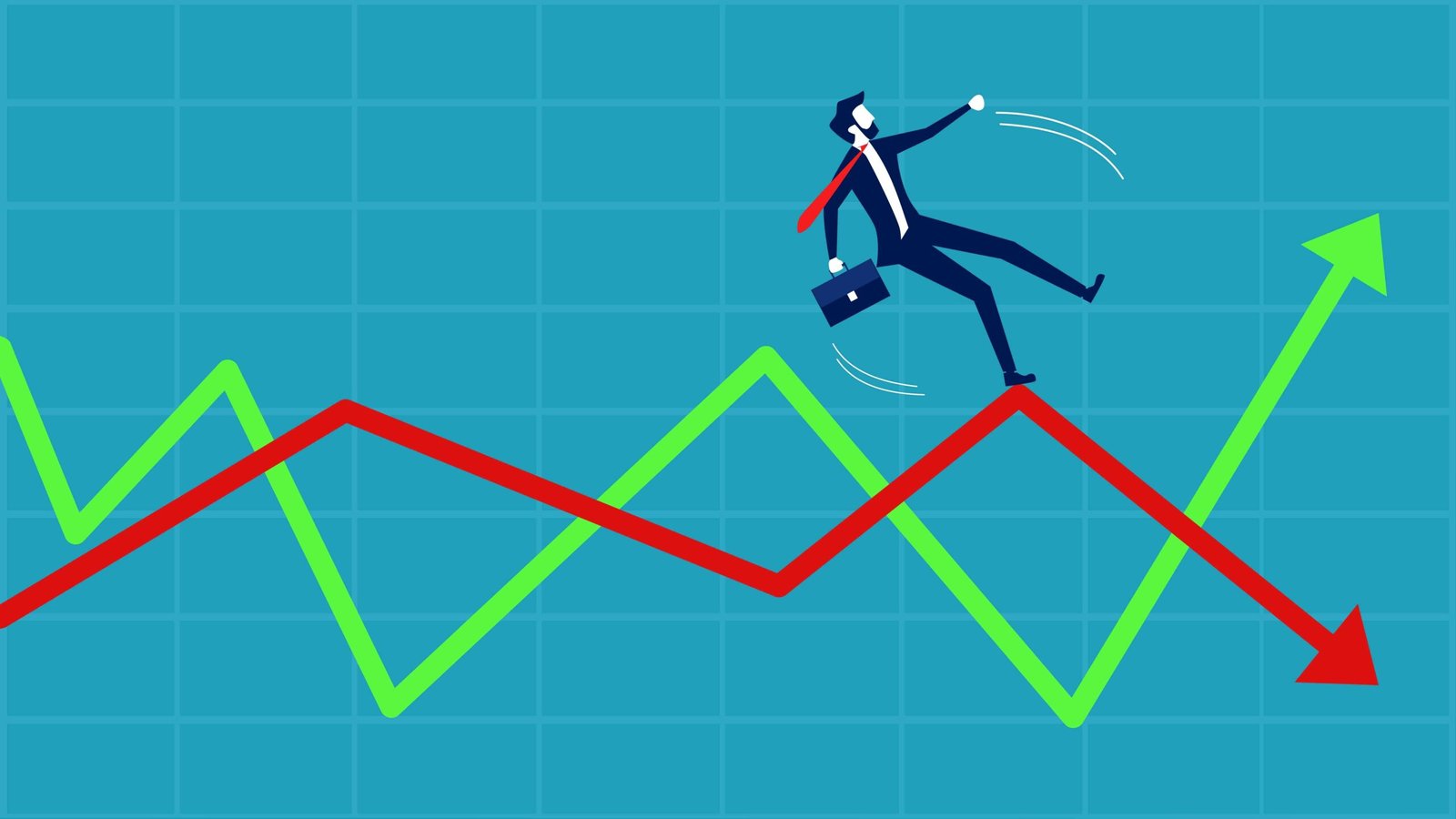Market volatility is an inherent part of the investment landscape, often causing significant fluctuations in asset prices. For mutual fund investors, understanding how volatility affects the performance of their investments is crucial to managing risk and making informed decisions. This article explores the relationship between market volatility and mutual fund performance, highlighting the ways in which fund managers navigate uncertain markets, and what investors should consider to protect and grow their investments during turbulent times.
What is Market Volatility?
Market volatility refers to the degree of variation in the price of securities over time. It is typically measured by metrics such as the VIX (Volatility Index), which gauges market expectations for future volatility. High volatility usually signals large swings in asset prices, which can be caused by factors such as economic data releases, geopolitical tensions, corporate earnings reports, or changes in monetary policy. While volatility is often seen as a risk, it can also present opportunities for investors in various asset classes, including mutual funds, who are able to manage it effectively. In particular, mutual funds that focus on equities or sectors can experience significant fluctuations during volatile periods, but also offer opportunities for long-term growth when managed prudently.
Types of Mutual Funds Affected by Volatility
Mutual funds, which pool investors’ money to invest in a diversified portfolio of assets, are susceptible to market volatility in different ways. The impact of volatility can vary based on the type of mutual fund in which an investor is invested.
- Equity Mutual Funds: Equity mutual funds invest primarily in stocks, and these funds tend to be more sensitive to market volatility. When the stock market experiences sharp price swings, equity funds may see significant gains or losses. Volatility can cause short-term fluctuations in the performance of equity funds, especially those that focus on high-growth sectors or small-cap stocks. However, long-term investors in equity funds often see volatility as part of the natural market cycle, with the potential for higher returns over time.
- Bond Mutual Funds: Bond mutual funds, which invest in government or corporate bonds, are generally considered less volatile than equity funds. However, they are not immune to market swings. Bond prices can fluctuate in response to interest rate changes, inflation expectations, and other macroeconomic factors. For instance, during periods of rising interest rates, bond prices typically fall, impacting the performance of bond funds. However, in volatile stock markets, investors may flock to bond funds for stability, which can lead to an increase in their value.
- Balanced Funds: Balanced funds invest in a mix of stocks and bonds. These funds are designed to reduce risk through diversification. The level of volatility experienced by a balanced fund depends on its asset allocation. Funds with a higher allocation to equities will experience more volatility compared to those with a heavier emphasis on bonds. While balanced funds may be more resilient during times of market turbulence, they still face exposure to market movements. Mutual fund distributor plays a crucial role in guiding investors to select the right balanced funds based on their risk tolerance and financial goals, ensuring that investors have a diversified portfolio that can weather market fluctuations.
- Sector and Thematic Funds: These funds invest in specific sectors, such as technology, healthcare, or energy. Sector funds can experience higher levels of volatility due to their concentrated exposure to a particular industry. For example, during periods of market uncertainty, technology sector funds may see large price swings as they are highly sensitive to investor sentiment and economic cycles. Investors in sector funds should be prepared for greater fluctuations in performance.
How Market Volatility Impacts Mutual Fund Performance
The performance of mutual funds during periods of market volatility is influenced by several factors, including the fund’s investment strategy, the skill of its manager, and the overall market environment.
- Short-Term Fluctuations: During volatile periods, mutual funds—particularly equity-based ones often experience sharp price movements. The value of a fund can swing dramatically from one day to the next, depending on market conditions. For example, in the aftermath of a major geopolitical event, equity funds may see a significant drop in value as investors react to the uncertainty. On the other hand, bond funds may be less affected but still experience price changes based on interest rate expectations.
- Fund Manager’s Response: How a mutual fund manager reacts to market volatility can significantly influence the performance of the fund. Active fund managers may attempt to capitalize on market fluctuations by adjusting their portfolios to take advantage of perceived opportunities. For example, they may sell overvalued assets and purchase undervalued ones, or shift the portfolio’s asset allocation to hedge against risks. However, active management strategies come with costs, and not all managers successfully navigate volatility. In contrast, passive funds, which track indices, tend to have less flexibility during volatile periods, but they benefit from lower fees and long-term market exposure.
- Risk and Return Trade-Off: Volatility is often linked to higher levels of risk, but it can also create opportunities for higher returns. During volatile periods, mutual fund investors may be tempted to sell off their investments to avoid losses, but this could lock in their losses and prevent them from benefiting when the market eventually recovers. Long-term investors in equity funds, for example, might see short-term dips in the market as opportunities to buy assets at lower prices, potentially increasing their returns when the market stabilizes.
- Inflows and Outflows: Volatile market conditions can impact the flow of money into and out of mutual funds. When markets are down, investors may panic and redeem their shares, leading to a decline in the fund’s assets. This can force fund managers to sell assets in a declining market, which may further exacerbate losses. Conversely, during periods of rising markets, mutual funds may experience inflows as investors seek to take advantage of upward momentum. The timing of these inflows and outflows can significantly affect a mutual fund’s performance during periods of volatility.
How to Navigate Volatility in Mutual Fund Investing
For mutual fund investors, there are several strategies to consider in order to navigate market volatility effectively:
- Diversification: Diversification remains one of the most effective ways to reduce risk in a portfolio. By spreading investments across different asset classes, sectors, and geographical regions, investors can mitigate the impact of volatility on their overall portfolio. Many mutual funds automatically provide diversification, but investors should consider whether their holdings are sufficiently spread out across various types of assets.
- Focus on Long-Term Goals: One of the best ways to deal with volatility is to focus on long-term investment goals. Historically, markets have recovered from downturns, and long-term investors who stay the course often see positive returns over time. Attempting to time the market or making short-term decisions based on fear of volatility can often lead to suboptimal outcomes.
- Invest Regularly (Dollar-Cost Averaging): One strategy to smooth out the effects of market volatility is dollar-cost averaging (DCA). With DCA, investors commit to investing a fixed amount at regular intervals, regardless of market conditions. This strategy helps reduce the impact of short-term volatility by purchasing more shares when prices are low and fewer shares when prices are high.
- Choose the Right Fund for Your Risk Tolerance: Different mutual funds come with varying levels of risk. Equity funds, for example, are more volatile and suited to investors with a higher risk tolerance, while bond funds tend to be more stable and appropriate for those seeking lower volatility. It’s important to align your mutual fund investments with your risk tolerance, financial goals, and time horizon.
Conclusion
Market volatility can have a significant impact on the performance of mutual funds, particularly equity and sector-focused funds. While volatility can lead to short-term price swings, it also creates opportunities for long-term investors to benefit from market recoveries. Investors must stay informed about how volatility impacts their mutual fund holdings and consider strategies such as diversification, long-term planning, and regular investing to navigate turbulent markets. By understanding the effects of market volatility and taking a disciplined approach, mutual fund investors can better manage risk and position themselves for success in both stable and volatile market conditions.



